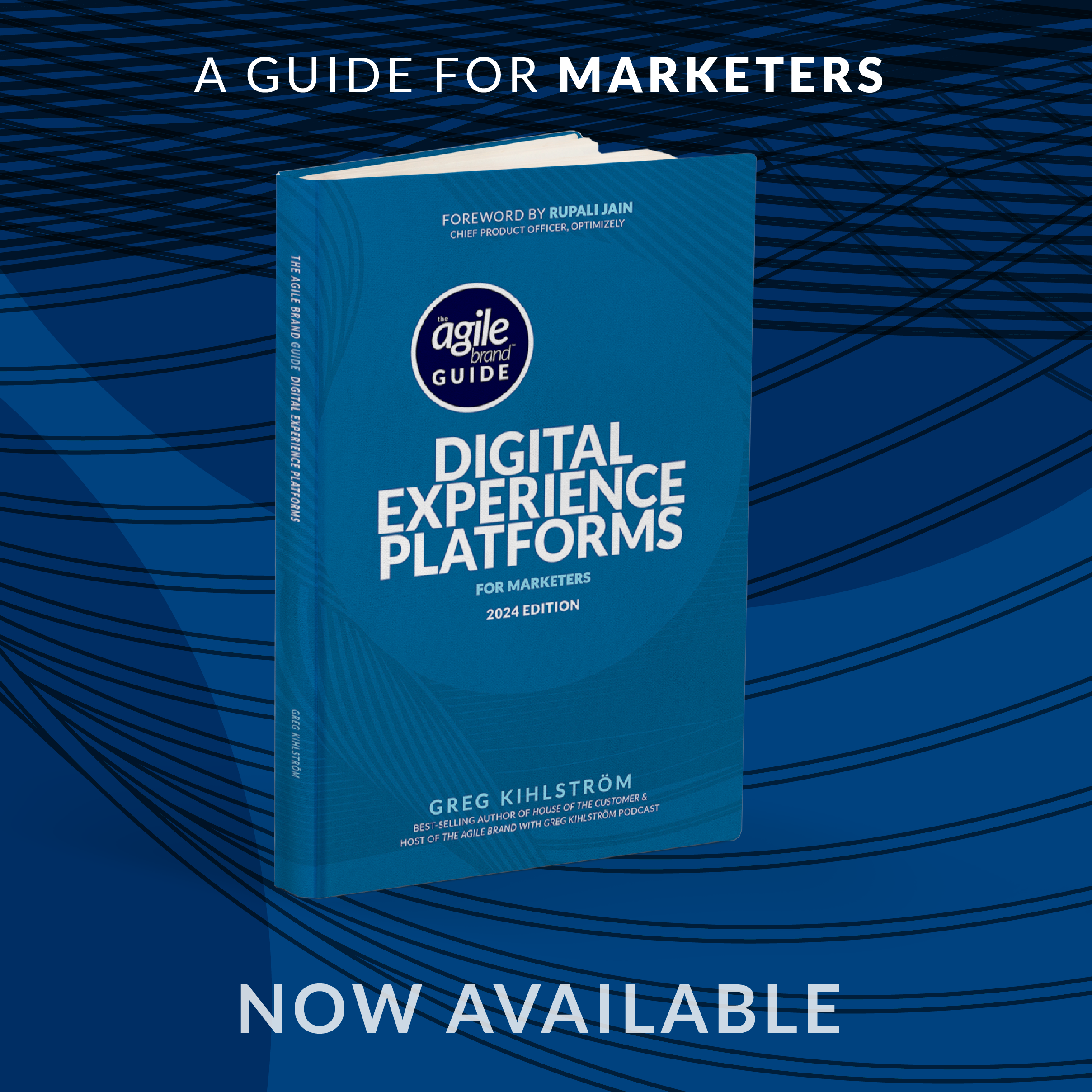This article was based on the interview with Mathieu Dhondt, Associate Director of Experience Consulting at EPAM by Greg Kihlström, AI Adoption keynote speaker for the B2B Agility with Greg Kihlström podcast. Listen to the original episode here:
The rapid adoption of generative AI is transforming the customer experience landscape in profound ways. We’re moving beyond simply automating tasks and entering a new era where AI-powered interfaces adapt to individual needs, creating seamless and personalized interactions. This shift presents both exciting opportunities and critical challenges for marketing leaders. As AI intermediaries become more prevalent, understanding how to design experiences that cater to both human needs and the requirements of these intelligent agents is paramount. The future of marketing hinges on our ability to navigate this evolving terrain, leveraging AI’s potential while preserving the human element that drives meaningful connections.
Let’s explore the insights shared by Mathieu Dhondt, exploring the evolving dynamics of customer experience in the age of AI. He highlights the transformative potential of AI-driven interfaces, the strategic role of friction in customer experience, the nuances of true personalization, and the evolving role of marketers in this new landscape. His perspectives offer a roadmap for marketing leaders seeking to embrace AI’s potential while staying true to the core principles of customer-centricity.
The Adaptable Interface: A Natural Evolution
Dhondt emphasizes that the shift towards adaptable interfaces is a logical progression of technology’s trajectory. He points to the evolution of music consumption, from concert halls to earbuds, as a parallel. Just as technology has brought music closer to us physically, software interfaces are becoming increasingly intuitive and personalized. “The interfaces are really adapting to us,” Dhondt observes, noting the progression from teletypes to voice interfaces and the revolutionary impact of chat interfaces for LLMs. This adaptability, he argues, is leading to a future where interfaces become almost invisible, seamlessly integrating into our lives and delivering precisely what we need.
Friction: The Double-Edged Sword of Customer Experience
Dhondt challenges the prevailing notion that all friction is detrimental to customer experience. He distinguishes between “unproductive friction,” such as tedious searches and cumbersome forms, and “productive friction,” which serves as a valuable gatekeeper for quality, compliance, and strategic decision-making. “There are levels of gatekeeping that we will still always have,” he asserts. The key lies in strategically leveraging AI to eliminate unproductive friction while retaining the necessary friction that empowers human decision-making and ensures quality control. Dhondt uses the analogy of a building company seeking a concrete supplier. An AI agent can efficiently filter options based on nuanced criteria, but the final decision remains with the human, who considers factors beyond the algorithm’s purview.
Personalization: A Happy Accident, Not the Ultimate Goal
While acknowledging the potential of AI to deliver hyper-personalized experiences, Dhondt cautions against making personalization the ultimate objective. He argues that true value lies in a balanced exchange between the customer and the brand. “What I give away is value that I give to you as a company, as a marketeer,” Dhondt explains. “What the company or the marketeer gives to me should be, in my perception, equally valuable.” This exchange, he suggests, may lead to personalized experiences, but the focus should remain on delivering maximum value, not simply achieving a segment of one.
The Marketer’s Evolving Role: From Tactician to Strategist
Dhondt envisions a future where marketers reclaim their strategic role, liberated from tedious manual tasks by AI. “A lot of the work of the marketing will shift back to the strategic level,” he predicts, emphasizing the importance of a holistic approach to customer relationships. Marketers, he suggests, will orchestrate the entire customer journey, influencing every touchpoint and ensuring alignment between brand promises and customer experiences. He draws a parallel to the evolution of accounting, where technology freed professionals from manual ledger entries, enabling them to focus on higher-level strategic tasks. “The human mind is infinite,” Dhondt asserts. “So they will find new things.” This, he believes, will be the case for marketers as well.
The rise of AI presents an opportunity for marketers to elevate their role, not be replaced by it. By embracing a strategic mindset, focusing on value exchange, and leveraging AI to eliminate unproductive friction, marketers can create truly meaningful and impactful customer experiences. Dhondt’s insights remind us that while AI can augment our capabilities, the human element remains essential in navigating the complexities of customer relationships. The future of marketing is not about relinquishing control to algorithms, but about empowering marketers to become even more effective in their roles as architects of customer value.
The key takeaway is not to fear the rise of AI, but to embrace its potential to unlock new levels of customer engagement and brand loyalty. The future of marketing is not about being replaced by machines, but about becoming more human, more strategic, and more focused on the things that truly matter: building relationships, delivering value, and making a positive impact on the lives of our customers.








